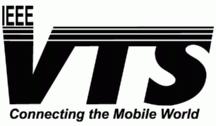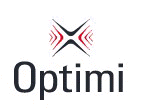
IEEE VT-S Propagation Committee
Survey of Planning Tools for Wide Area Wireless Systems
Wide area RF planning tools play a central role in the deployment of wireless systems from initial design and roll-out to densification and optimization. Such tools typically combine a Geographic Information System used to manage terrain and clutter data, a Database Management System used to manage base station location and configuration, RF coverage and traffic models used to predict signal strength and interference levels throughout the service area and optimization tools used to determine the best frequency and code assignments and base station locations.
This survey of planning tools for Wide Area Wireless Networks is offered as a service to the wireless community by the IEEE VT-S Propagation Committee. If you have comments, suggestions, corrections, or contributions, please contact Prof. Dave Michelson at: dmichelson@ieee.org
| CellOpt AFP | PathPro
|
GRANET-eQ
| QEDesign
| deciBel
Planner | Planet
EV | EDX
Signal Pro | x-Wizard | Probe
| NetPlan |
| CRC-COV
| CelPlanner
| RPS | Wavesight |
Odyssey | Volcano | Enterprise
| TEMS
CellPlanner Universal | WinProp | ComStudy |
| RFCAD | PathLoss | OPNET
| ComSite | ASTRIX
| IBiSA | Site Planner
| TAP
| NP
Workplace | Atoll
| NetMate
| iQclear
| FUN |
|
CellOpt AFP enables you to generate optimal frequency plans saving significant infrastructure investments automatically. The latest generation of CellOpt AFP software enables you to approach frequency planning with unprecedented levels of ease and confidence. Special care has been taken to ensure that daily frequency planning activities are well supported across the application. |
 PathPro (MLJ Wireless Systems Engineering Inc.) PathPro is a next generation integrated design tool which supports the design of wireless telephony networks including Paging, Cellular (AMPS, NAMPS), PCS, (E)SMR, GSM, WLL, LMDS, and other wireless standards. Features such as interactive cell positioning, automatic updates of design plots and a powerful networking system enable the user to examine entire network design iterations quickly. |
 GRANET-eQ (Equilateral Technologies) GRANET (GRAphical Radio Network Engineering Tool) is a comprehensive software system that allows telecommunication companies to plan cellular and PCS radio networks both efficiently and economically. GRANET-eQ started out as a complete redesign of the already successful UNIX version. It has been optimized for speed and ease of use and now runs on standard Windows-based desktop and laptop computers. The new release has improved accuracy and leads to impressive capacity and quality improvements. The new GRANET-eQ software package embodies superior patented technology in several key areas that are critical to the design of a high-performance, minimal-cost wireless networks. |
 QEDesign (Ericsson, acquired from QUALCOMM, Inc.) The QEDesign software package is used to predict CDMA coverage and network performance based on geographic data, demographic demand, and the specific network layout. The software integrates propagation prediction routines to analyze key CDMA performance issues, including CDMA soft handoff regions, forward and reverse link coverage, required channel resources, and automatic cell size adjustment based on demand. |
 deciBel Planner (Marconi - acquired by Ericsson) Marconi has acquired MSI and Northwood Technologies and has combined their innovative wireless software solutions and services: Planet and deciBel Planner. Planet is an enterprise solution designed to build bridges between strategic planning, business areas, network design, and implementation throughout the organization. The deciBel Planner suite of Windows-based network planning software products is used to design wireless networks based on CDMA2000, as well as other mobile and broadband wireless technologies. deciBel Planner also seamlessly combines RF prediction and spatial analysis capabilities, enabling network operators to efficiently plan, build and operate complex and high-speed wireless networks. Marconi is the only company that offers Windows and Unix-based products and services around the globe, with support for 2G, 2.5G and 3G networks including: AMPS, iDEN, GSM/TDMA, GPRS, CDMAOne, cdma2000 (1xRTT, 1xEV-DO, 1xEV-DV), UMTS, Point -to-point, microwave and fixed wireless planning (2 GHz to 40 GHz) |
 Planet EV (Marconi - acquired by Erocsson) Planet EV is a complete multi-technology solution, serving GSM, TDMA, iDEN, TD-SCDMA, CDMA2000, W-CDMA, Broadband, and Microwave with implementations in over seventy countries worldwide. All aspects of network design and optimization are fully supported, from automatic frequency and cell planning to QoS analysis to foundational geodata and more. It enables users to design a truly scalable network, utilizing 2G, 2.5G, or 3G wireless technologies. |
 EDX Signal Pro (EDX Division of Comarco Wireless Technologies, Inc.) EDX SignalPro for Windows 98/NT/2000/XP is an advanced, comprehensive, general-purpose software package offering a complete set of planning tools for wireless networks from 30 MHz to 60 GHz. Optional system design modules are available to provide more specialized capabilities. The tool takes advantage of Windows' graphical user interface, with multiple map displays, support for Windows printer/plotter device drivers, clipboard support, and the convenience of toolbars. EDX SignalPro is the most advanced and flexible wireless communication system planning tool for your PC. It can perform multi-site coverage and interference analysis, single-point analysis, route analysis, multiple point-to-point link analysis, and point-to-multipoint analysis. It includes a comprehensive set of propagation models, full mapping capabilities, and full access to terrain, ground cover (clutter), building, demographic, traffic, and other databases. |
|
x-Wizard is
a high precision 2G, 2.5G, 3G
network planning and design tool that helps wireless service providers
plan for network growth and manage next generation technology
migrations. x-Wizard's unique capability of modeling network conditions
at the deployment phase helps reduce the typical design cycle up to
20%. x-Wizard simulates networks at the deployment phase and provides
RF engineers with a tool to evaluate
growth in the voice and data service offerings through an easy-to-use
graphical user interface. Engineers can manage interference by
determining how network loading affects QoS by going beyond the typical
interference prediction model with forward and reverse link QoS
predictions as well as Monte Carlo Simulations that predict BER, FER,
and QoS. x-Wizard supports all major radio
technologies including: AMPS, TDMA, GSM/GPRS, iDEN/TETRA, 1xRTT, 1xEvDo
and UMTS-FDD. |
 Probe (V-Soft) Probe is a professional level tool for RF propagation modeling, DTV/TV and FM interference analysis which produces high quality "atlas" type maps. It integrates a 200,000 megabyte population database with polygon mapping. Propagation models includes Longley-Rice, TIREM, PTP, Line of sight, and standard FCC methods. V-Soft also has an extensive line of other productivity tools for engineering consultants. |
 NetPlan (Motorola) NetPlan simulates CDMA, CDMA2000 1X, GPRS and UMTS technologies and models GSM and IS136 TDMA technologies, accurately predicting coverage as you roll out new applications and generating images to check available throughput and call quality by location. Now that mixed transmission rates for packet data services have increased the complexity of system design, simulation has become an essential tool. NetPlan's accurate simulations can help you account for subscriber traffic, speed distribution characteristics, activity factors, soft handoff, delay spread and pilot powers a host of variables that alternatives like link-budget models and statistical analysis simply cannot manage. |
 CRC-COV (Industry Canada - Communications Research Centre) CRC-COV is a software to design and predict coverage of broadcast systems. Evaluation and analysis of signal propagation are performed using complex models and detailed topographical information. Available propagation models includes Longley-Rice (area and point to point mode), CCIR Rec. 370 (VHF and UHF) along with the CEPT DAB planning revision of Rec. 370, Okumura, Free Space and CRC-PREDICT while DTED, USGS, CRC-COV and CRC-PREDICT databases are supported by the software. |
 CelPlanner (CelPlan Technologies) CelPlanner Suite consists of software prediction tools, databases and subscriber data, such as demographics, that combine to produce highly accurate RF propagation reports. CelPlanner's elements include: Databases, Integrated Link Budget, Propagation Analysis, Measurement Integration, Demographic analysis, Traffic/Load analysis, Predictions, and Frequency and code planning. The package runs on Windows 9x/NT platforms. |
 RPS - Radiowave Propagation Simulator (Radioplan - acquired by Actix) RPS is designed for fast and accurate channel estimation and coverage prediction in urban and suburban building areas (microcells) and as well in indoor cells for a frequency range from 0.8 up to 60 GHz. The 2.5D prediction algorithms and the ability to distribute the necessary computations to parallel working RPS-Server-Workstations make RPS to one of the fastest and most flexible deterministic-based propagation simulators. Beyond the integrated GUI-based building database designer and various internal data analysis functions, RPS provides an interface to the MATLAB(TM) software package. That interface makes nearly unlimited further evaluation of computed channel data in time and space (DOA,AOA) in both, elevation and azimuth, possible. |
 Wavesight (Wavecall) Wavesight is an advanced ray tracing prediction model and optimization tool designed for use in urban areas. It may be employed in microcell, small cell and macrocell environments. The Wavesight prediction algorithm is embedded in Arcview, but can be plugged in to any planning tool such as the Aircom Enterprise Tools. |
 Odyssey (Andrew Network Solutions Ltd., A Commscope Company) Odyssey is a powerful and comprehensive network planning solution designed by operators to meet the needs of operators. Odyssey provides RF design for the complete network lifecycle and is the most accurate radio prediction solution on the market today. Odyssey is a true multi-platform radio planning solution, which runs on both Unix (Sun Solaris) and Microsoft Windows operating systems. |
|
Volcano (Siradel) Volcano is a
propagation software
component developed by Siradel, which stems from nearly 10 years of
continuous research and development to meet the increasingly complex
demands of wireless telecommunications operators. Volcano can be
integrated into any type of radio planning software tool and offers
deterministic propagation models that include UMTS-ready functions and
powerful algorithms such as optimized ray-tracing/UTD, automatic
tuning, multi-resolution capabilities, indoor penetration, wideband
propagation, as well as macro-, mini-, micro- and pico-cellular
propagation simulation. Moreover, Volcano
is unrivaled in its ability to generate highly accurate and fast
calculations, with accuracy vs. calculation speed adaptability,
essential for many radio-planning tasks. |
 ENTERPRISE SUITE (AIRCOM International) The ENTERPRISE Suite offers a complete PC-based network planning and optimisation solution. This integrated software system provides maximum data availability across an organisation thus reducing overall IT infrastructure and administration costs. All of the tools have a common look-and-feel which results in increased productivity and lower training costs. Components can be installed in any combination depending on the end-user requirements. The purchaser also has the ability to license additional components as needs grow. There is increased problem-solving capabilities due to availability of network configuration data within all tools. |
 TEMS CellPlanner Universal (Ericsson) TEMS CellPlanner Universal is a new sophisticated radio network design tool developed by Ericsson. TEMS CellPlanner Universal has a complete set of configuration files interfaces, which seamlessly interconnect with the radio access infrastructure equipment for WCDMA, CDMA, and GSM networks. The modular platform makes it easy to add more interfaces and to do other customizations. TEMS CellPlanner Universal is a truly multi-vendor, multi-technology tool that is able to plan and design networks for WCDMA, GSM, GPRS, EDGE, CDMA, iDEN, and TDMA systems. |
 WinProp (AWE) WinProp's unique CNP (Combined Network Planning) features makes it well-suited for use in macro-, mini-, micro- and picocell network planning. It features terrain (macrocell) predictions using the parabolic equation method, predictions for urban cells, indoor receivers in mobile communication networks (penetration of buildings), indoor wireless networks, and planning of wireless LAN's (WLAN). Features include prediction of field strength / received power, prediction of delay spread, and prediction of fast fading. |
|
ComStudy (RadioSoft) ComStudy is software designed for Microsoft Windows which fully integrates coverage, interference and allocation studies for AM, FM, TV, Point-to-Point, Point-to-Multipoint and all forms of Land Mobile services. Simple enough for beginners and yet powerful enough for design engineers and professional frequency coordinators, ComStudy can map a single police department frequency as easily as interference to a thousand-site network. Continuously improvements ensure that ComStudy users will always be up-to-date, whether it is the latest online transmitter databases or new FCC or ITU TV interference definitions. |
 RFCAD (SiteSafe, Inc.) RFCAD 2.4 integrates scanned topographic maps for use as the base layer in system designs so that one can produce clear and easy-to-see RF coverage and analysis maps. In addition, RFCAD 2.4 allows one to export coverage prediction studies into ArcView in order to provide flexible system analysis and integration within an existing GIS model. Its Biby-C propagation model is based on more than fourteen years of engineering analysis and system design experience. ArcView is a registered trademark of Environmental Systems Research Institute, Inc. |
 Pathloss (Contract Telecommunication Engineering) The Pathloss program is a comprehensive path design tool for radio links operating in the frequency range from 30 MHz to 100 GHz. The program is organized into eight path design modules, an area signal coverage module and a network module which integrates the radio paths and area coverage analysis. Switching between modules is accomplished by selecting the module from the menu bar. |
 OPNET Modeler, OPNET Radio and ERP Network Guru for SAP R/3 (Opnet) The OPNET family of network simulation tools provide for design, simulation and analysis of digital communication networks and distributed systems. They allow users to develop custom models of network software including distributed algorithms and protocols. OPNET Modeler includes point-to-point and multi-cast link models. OPNET Radio includes radio frequency and satellite modeling. ERP Network Guru helps users predict the effects of proposed SAP deployment on their enterprise network. |
 ComSite (RCC Consultants) This powerful PC-based software eliminates the arduous and repetitious work associated with site interference analysis. ComSiteProTM performs intermodulation signal level and Transmitter Noise/Receiver Desensitization Analyses based on actual site conditions automatically accessing equipment manufacturers' transmitter noise and receiver desense curves, vertical and horizontal space isolation graphs, insertion and rejection loses for duplexers, bandpass/notch cavity filters combiners, isolators, preselectors, and other filter and muliticoupling devices. |
 ASTRIX (Teleplan) ASTRIX is a system for planning of mobile systems. ASTRIX is built around three main components 1) RPS - Radio Planning System for mobile systems - Effective ways of planning and managing changes in the network. 2) RLT - Radio Link Tool 3) Integrated Network Database - The Site Database built on Oracle - and with an open format. ASTRIX has advanced macro cell multipath predictions for GSM (the so-called Q15 problem). ASTRIX is frequently updated to keep up with customer demand for advanced functionality. ASTRIX is currently in operations on three continents and is planning advanced dual-band network functionality. |
 IBiSA (CDS Ltd.) IBiSA is a unique software tool for ensuring that in-building systems meet coverage requirements while minimising the cost of deployment. IBiSA is applicable to a wide range of wireless technologies, including 2G, 3G, TETRA and Wireless LAN. IBiSA provides precise forecasts of coverage characteristics of a proposed in-building system. It enables the designer to effectively minimize the system cost involved in attaining the required levels of coverage and capacity. IBiSA builds on two elements developed uniquely at CDS. Firstly, CDS experience of over 250 in-building projects, including the world's busiest airport and the UK's tallest building. Secondly, a patented technology developed by CDS and known as Measurement-based Prediction, MbP, which takes simple site surveys and predicts radio wave propagation characteristics throughout a building, even for antenna locations which were not initially tested. |
 SitePlanner (Wireless Valley Communications) SitePlanner is a fully integrated design, measurement, optimization, and management engineering tool for in-building, campus-wide, and microcell wireless communications systems. The tool suite includes the Predictor, InFielder, and Optimatic modules that work seamlessly for all phases of deployment, maintenance, and optimization of a local wireless system. |
 TAP - Terrain Analysis Tool (SoftWright, Inc.) Tap is Windows-based software to perform evaluation of existing or proposed transmitter sites, radio coverage predictions,TV and FM broadcasting, microwave, cellular, PCS, paging, and two-way radio system design. |
|
Network Planner
WorkPlace (Multiple Access Communications Ltd.) The Network
Planner WorkPlace (NP
WorkPlace) offers high resolution urban cellular planning for all
wireless standards (2G and 3G, 400 MHz to 3.5 GHz). Producing 5m bin
resolution outputs from 1m resolution building maps (not clutter based)
and 10 - 20m terrain databases, the NP WorkPlace offers minicell and
microcell RF predictions for any city environment. The minicell
algorithm (MiniWorks) is intended for use where the antennas are roof
mounted and, using 3D building data, can generate RF predictions at any
height above the terrain. The microcell algorithm MicroWorks) is used
when the antennas are mounted below the surrounding roof height, on
building walls for example, and predicts the RF propagation in the
"urban canyons" formed by the buildings and streets. The NP WorkPlace
utilises proprietary, highly accurate algorithms that do not need to be
calibrated prior to use. The prediction algorithms can be supplied as
kernels for integration into other planning tools. The NP WorkPlace is
PC based, and the kernels can be ported to most platforms. MACcdma is a
CDMA network model designed
to guide engineers involved in planning a CDMA-based 3G network, where
service mix and traffic density together with network based control
algorithms will affect blocking and service delivery areas in ways
never imagined in 2G systems. MACcdma is a post RF prediction tool that
can use coverage prediction from the NP WorkPlace and other propagation
prediction tools. |
|
Atoll is a
comprehensive Windows-based
multi-technology and user-friendly radio planning environment that
supports wireless telecom operators throughout the entire network
lifecycle, from initial design to densification and optimisation. It
supports GSM/TDMA, GPRS/EDGE, W-CDMA/UMTS, CdmaOne/CDMA2000, and
microwave links. Apart from its engineering capabilities,
Atoll is an open, scalable and flexible technical information system
that integrates easily with other IT systems, increases productivity
and shortens lead times. In addition, Atoll provides an open interface
platform to support any custom requirements. Atoll is designed to work
in a very wide
range of implementation scenarios, from standalone to enterprise-wide
server-based configurations using distributed and parallel computing. |
 NetMate (Network Planning Systems) NetMate has a rich set of capabilities that includes: network and equipment modeling, visual analysis, financial analysis, presentation and reporting. It incorporates world-class planning and optimization techniques to enable the Network Planner to deliver the most cost-effective network possible. The NetMate suite enables planners to design their networks to meet or exceed their business objectives, marketing strategies and regulatory requirements. The suite of tools can be applied productively across the spectrum of network evolution: from green field network builds; through expansions of size, scope, geographic coverage, and new technologies; to network optimization and/or consolidation challenges. |
|
iQclear (Comsearch) iQclear
is a comprehensive engineering software tool for the prediction and
assessment of interference between PCS and microwave systems. It
determines the extent to which spectrum may be shared between a
potential PCS system and incumbent microwave users. iQclear was
developed by, and for, RF
engineers who plan, analyze and design PCS systems in accordance with
governmental agency mandates, e.g., FCC, on coexistence with microwave
incumbents. The software can be customized based on specific
international requirements and allows the user to perform basic
interference analyses including PCS-to-microwave, microwave-to-PCS,
spectrum recommendation and collocation. |
 FUN (COSIRO) FUN is a suite of wireless network planning tools offering stand-alone or integrated products for radio planning. FUN supports a full range of GSM / HSCSD / GPRS / EDGE / UMTS / Microwave / Micro cell wireless network planning, and a range of propagation models including ray tracing models. It has open system architecture using robust and prevalent interface standards such as CORBA / JAVA / C/C++ API / POSIX/C / X11 / Direct RDBMS access and multi-platform capability including LINUX / UNIX / WINDOWS / JAVA. |






